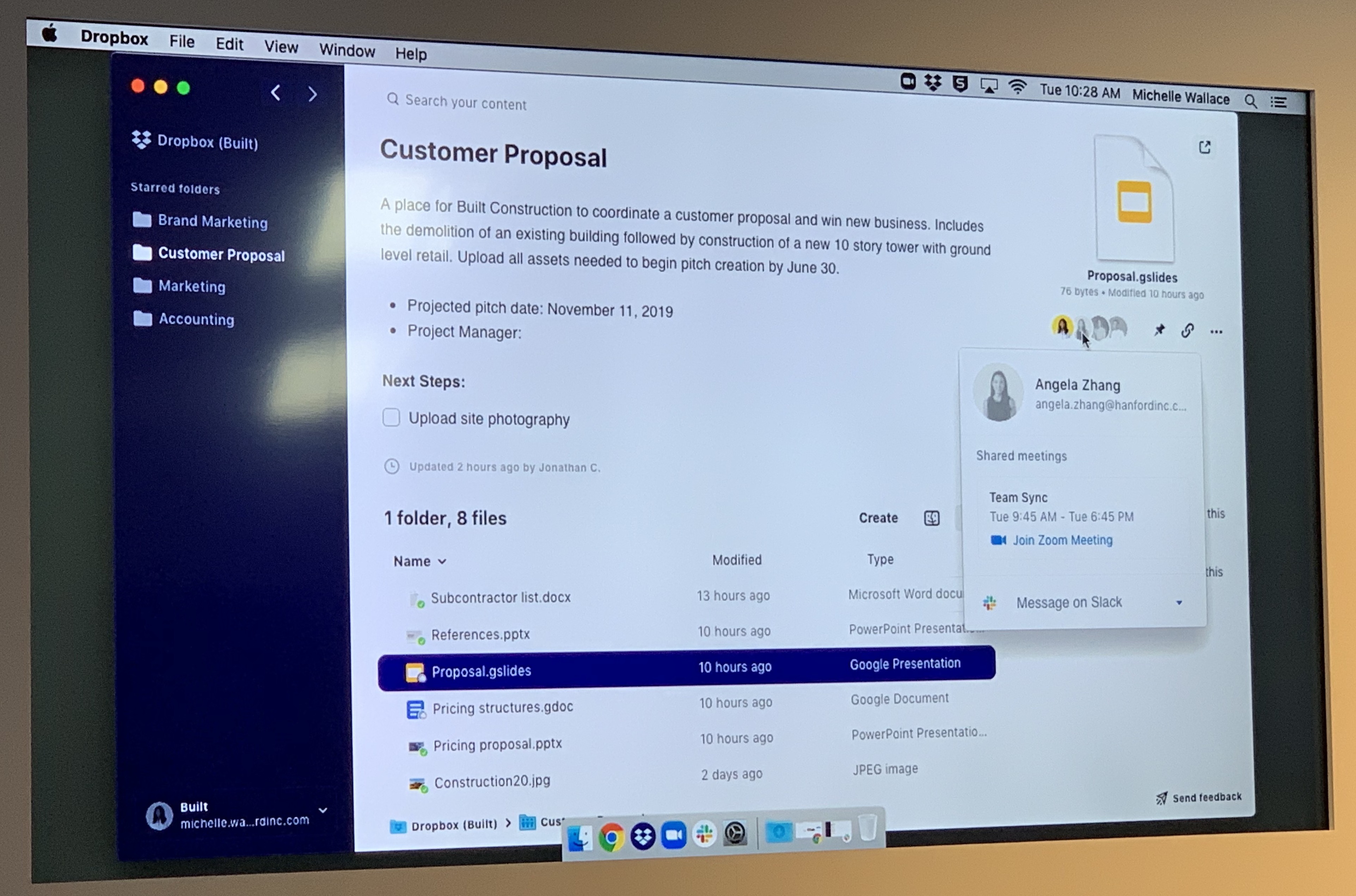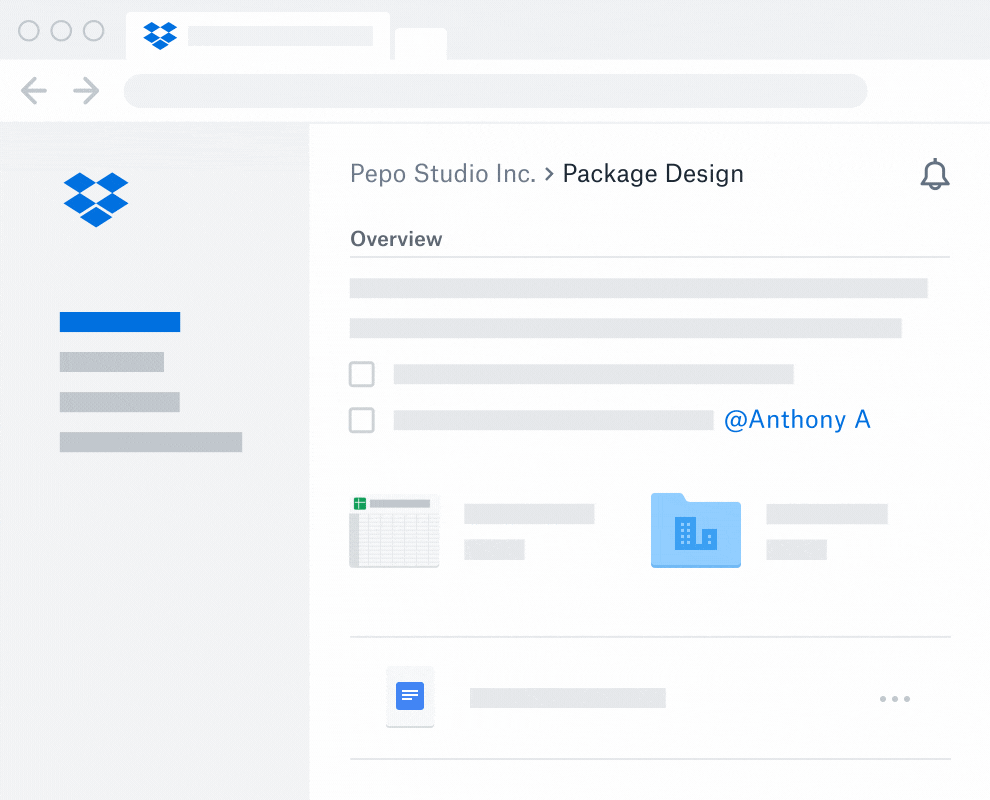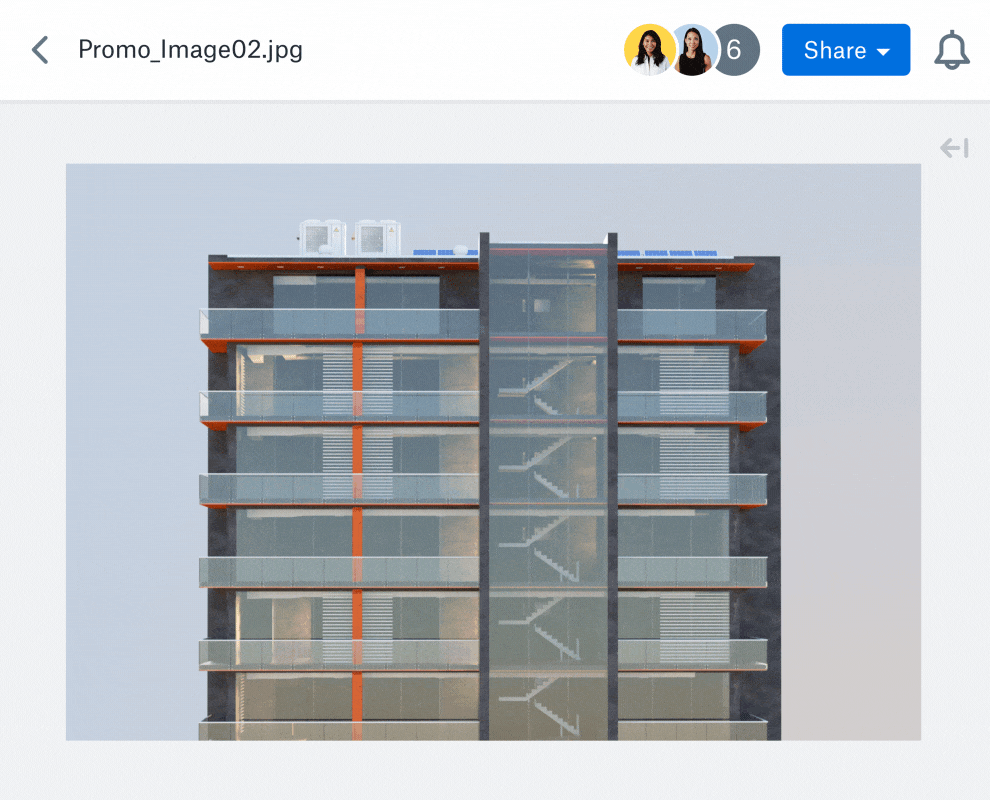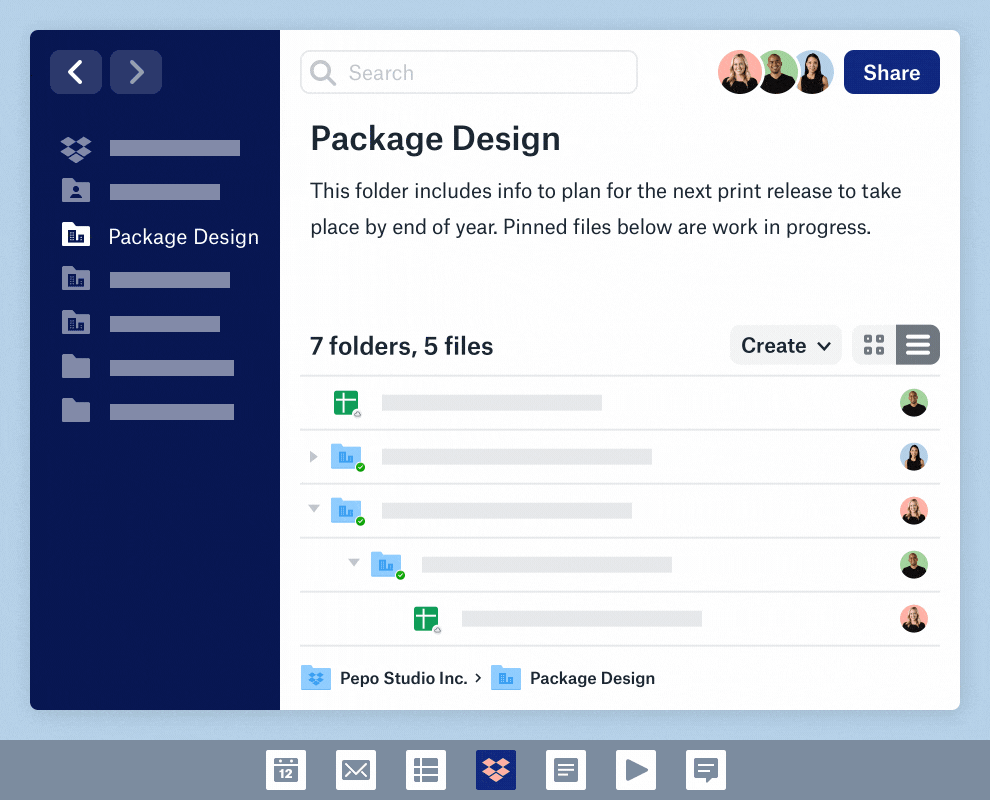Dropbox relaunches as an enterprise collaboration workspace
Dropbox is evolving from a file-storage system to an enterprise software portal, where you can coordinate work with your team. Today the company launches a new version of Dropbox that allows you to launch apps with shortcuts for G Suite and more, plus use built-in Slack message-sending and Zoom video calls. It lets you search across all your files on your device and inside your other enterprise tools, and communicate and comment on your team’s work. Dropbox is also becoming a task manager, with the ability to add notes and tag co-workers in to-do lists attached to files.
The new Dropbox launches today for all of its 13 million business users across 400,000 teams plus its consumer tiers. Users can opt-in here for early access and businesses can turn on early access in their admin panel. “The way we work is broken,” CEO Drew Houston said to cue up the company’s mission statement: “to design a more enlightened way of working.”

Dropbox seems to have realized that file storage by itself is a dying business. With storage prices dropping and any app being able to add their own storage system, it needed to move up the enterprise stack and become a portal that opens and organizes your other tools. Becoming the enterprise coordination layer is a smart strategy, and one that it seems Slack was happy to partner into rather than building itself.
As part of the update, Dropbox is launching a new desktop app for all users so it won’t have to live inside your Mac or Windows file system. When you click a file, you can see a preview and presence data about who has viewed it, who is currently and who has access.

The launch includes deep integrations with Slack, so you can comment on files from within Dropbox, and Zoom, so you can video chat without leaving the workspace. Web and enterprise app shortcuts relieve you from keeping all your other tools constantly open in other tabs. Dropbox’s revamped search tool lets you crawl across your computer’s file system and all your cloud storage across other productivity apps.

But what’s most important about today’s changes is that Dropbox is becoming a task-management app. Each file lets you type out descriptions, to-do lists and tag co-workers to assign them tasks. An Activity Feed per file shows comments and actions from co-workers so you don’t have to collaborate in a separate Google Doc or Slack channel.
When asked about how Dropbox decided who to partner with (Slack, Zoom) versus who to copy (Asana), VP of biz dev Billy Blau essentially dodged the question while citing the “shared ethos” of Dropbox’s partners.
Houston kicked off the San Francisco launch event by pointing out that it’s easier to find info from the public than our own company’s knowledge that’s scattered across our computers and the cloud. The “Finder” on our computers hasn’t evolved to embrace a post-download era. He described how people spend 60% of our office time on work about work, like organization and communication, instead of actually working — a marketing angle frequently used by task-management startup Asana that Dropbox is now competing with more directly. “We’re going to help you get a handle on all this ‘work about work,’ ” Dropbox writes. Yet Asana has been using that phrase as a core of its messaging since 2013.

Now Dropbox wants to be your file tree, your finder and your desktop for the cloud. The question is whether files are always the central unit of work that comments and tasks should be pegged to, or whether it should be the task and project at the center of attention with files attached.
It will take some savvy onboarding and persistence to retrain teams to see Dropbox as their workspace instead of their computer’s desktop or their browser. But if it can become the identity and collaboration layer that connects the fragmented enterprise software, it could outlive file storage and stay relevant as new office tools emerge.
Powered by WPeMatico